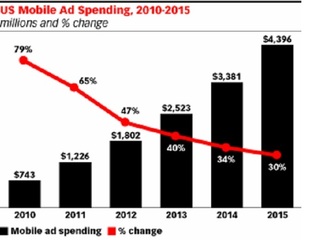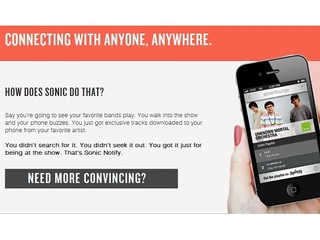DUOS expands AI capabilities to help seniors apply for assistance programs
It will complete and submit forms, and integrate with state benefit systems
Read more... 
As more marketers search for ways to incorporate mobile strategies into their campaigns, some may find the latest Nielson report showing US audiences far less receptive to mobile ads than their UK, German and Italian counterparts, discouraging.
The report, out Thursday, showed that out of the four countries compared, consumers in the US are far less likely to make purchases on their mobile devices based on an ad seen on their mini-screen -- while German and Italian consumers were more influenced to buy a product after seeing a mobile ad (but not necessarily to buy on the same device).
Only 16% US tablet owners were translating ads they saw into purchases made on that device (and a mere 6% of US smartphone users bought and item advertised on their phone). Skeptical much US consumers? Possibly. Or we could just be more likely to tune out the noise we see in ads all the time.
UK consumers were more than twice as likely to make a purchase on their smartphone from an advertisement they see (14%), while the UK tablet response was identical to the US -- at 16%. So perhaps European consumers have more quickly adopted the concept that phones and tablets are on equal playing fields, while US consumers see their phone less as a computer with equal standing to a tablet or PC.
This could be discouraging for marketers that were so happy to hear what a growth market mobile ads were becoming. Over the summer, we reported that the mobile advertising industry was projected to reach $4 billion in revenues by 2015, according to a report from research firm BIA/Kelsey. This is great compared to the 2010 mobile ad revenue that reached $790 million.
Of that revenue, locally targeted ads accounted for $404 million, or 51% of overall U.S. mobile ad spending. By 2015, local mobile ads will grow to account for 70% of all mobile ads, generating $2.8 billion in revenues.

Another marketing report by Nielson showed that US was least receptive to text or mobile advertisements, stating that only 26% of consumers trusted those ads - while 46% trusted ads seen on TV. This could play the biggest role in whether US smartphone owners would feel comfortable clicking on those ads and purchasing items through such a means -- especially since we keep being warned about the lack of phone security we experience compared to our PCs.

But, surprisingly (to me, at least), nearly a quarter of all respondents across the board clicked on advertisements seen to reveal the product offering on their tablet. This seems like a promising number for those creating tablet ads -- especially since I have never (purposely) clicked on an ad from my tablet or my smartphone.
And another arching similarity across all four countries was the higher likelihood that consumers still feel most comfortable or confident purchasing an item from a PC after seeing an advertisement. No matter where the respondent was from, they were far more likely to make the purchase on a PC rather than the device that they saw the ad on.
This may be a viewability element, a security issue or a comfort-level but it is a factor that advertisers should be factoring in -- likely helping them remain succinct, memorable and clear so that the information can be translated easily when consumers translate that message to a separate device.
Another element from this study that marketers will want to take away is that only 10% or less of the consumers on mobile devices used a coupon that was presented to them (and similarly, only 10-13% of tablet users utilized a coupon that showed up on their device). Whether it is comfort or execution, digital coupons have not taken a stronghold in the market and have room to grow.
It will complete and submit forms, and integrate with state benefit systems
Read more...The bill would require a report on how these industries use AI to valuate homes and underwrite loans
Read more...The artists wrote an open letter accusing OpenAI of misleading and using them
Read more...




